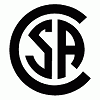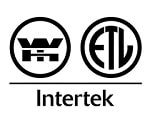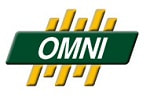|
Nanaimo
(778)650-0230 |
Cowichan Valley
(250)800-2251 |
Victoria
(250)250-0390 |
Solid Fuel Code Standards
Fireplace & Chimney
Standards Council of Canada
CSA Group
|
The CSA group is responsible for developing standards in over fifty areas. The group was previously known as The Canadian Standards Association. The CSA is accredited by the Stadards Council of Canada. A product with the CSA logo demonstrates that a product has been tested and certified to meet recognized standards.
|
Accredited Test Laboratories
Underwriters Laboratories Canada
Intertek
OMNI-Test Laboratories
Certifying a Woodburning Product
In order to have a product certified, the wood-burning factory built appliance manufacturer submits a product sample for testing with an installation manual, Engineers drawings, promotional brochures, and any other info on the product. The lab then performs tests as outlined in the safety testing standard, reviews the installation manual and all other information for accuracy. If the unit and documents meets the requirements, it is deemed certified, and a label for that unit is issues. If it does not, modifications must be made and submitted for re testing.
It is a common misconception that a Chimney Technician provides certification through the means of inspection. During a chimney inspection, a Chimney Professional will observe the wood-burning system for visible defects and compliance. A Chimney Technician may be trained and certified from a recognized organization such as WETT inc, or the CSIA but does not certify wood burning appliances.
It is a common misconception that a Chimney Technician provides certification through the means of inspection. During a chimney inspection, a Chimney Professional will observe the wood-burning system for visible defects and compliance. A Chimney Technician may be trained and certified from a recognized organization such as WETT inc, or the CSIA but does not certify wood burning appliances.
Codes & Standards for Solid Fuel Appliances
Below is a table containing the standard code solid fuel appliances or equipment. Wood burning appliances and equipment are subject to testing of the standard code from a third party, accredited laboratory. If the product adheres to the standard requirements it has been tested to and the manufacturers manual is accepted, product certification is established.
These codes and standards are for fireplaces, chimneys, venting systems and other solid fuel products that have been fabricated by a manufacturer and are often metal. Canadian and Provincial code related to fireplaces, chimneys and solid fuel appliances and equipment that have been built on site fall under the National Building Code, Provincial Building Code, National Fire Code, Provincial Fire Code, municipal bylaws, regulations, and your local Authority Having Jurisdiction requirements (your municipality or city official).
Many International Countries, including the United States, accept the International Building Code for site built fireplaces and chimneys. In the U.S., the standard code for factory built appliances - prefab fireplaces, are defined under UL classifications. Some States in the U.S. recognise the NFPA 211 - Standard for Chimneys, Fireplaces, Vents, and Solid-Fuel Appliances. This document also defines chimney inspection requirements for Chimney Professionals. In Canada we do not have a regulated standard of practice for chimney professionals. Solid fuel training and "certification" is offered by a private, non regulatory organisation - WETT (Wood Energy Technology Transfer Inc). Canadian Chimney has adopted chapter 14 and 15 guidelines for chimney professionals, from the NFPA 211 as we believe the standard of practice outlined offers our clients the highest standard of care and fire safety. Burning a fire in your home is a risk in itself, ensure to only hire a Qualified Chimney Professional that has the highest standard of care when it comes to your family, fire safety and home.
These codes and standards are for fireplaces, chimneys, venting systems and other solid fuel products that have been fabricated by a manufacturer and are often metal. Canadian and Provincial code related to fireplaces, chimneys and solid fuel appliances and equipment that have been built on site fall under the National Building Code, Provincial Building Code, National Fire Code, Provincial Fire Code, municipal bylaws, regulations, and your local Authority Having Jurisdiction requirements (your municipality or city official).
Many International Countries, including the United States, accept the International Building Code for site built fireplaces and chimneys. In the U.S., the standard code for factory built appliances - prefab fireplaces, are defined under UL classifications. Some States in the U.S. recognise the NFPA 211 - Standard for Chimneys, Fireplaces, Vents, and Solid-Fuel Appliances. This document also defines chimney inspection requirements for Chimney Professionals. In Canada we do not have a regulated standard of practice for chimney professionals. Solid fuel training and "certification" is offered by a private, non regulatory organisation - WETT (Wood Energy Technology Transfer Inc). Canadian Chimney has adopted chapter 14 and 15 guidelines for chimney professionals, from the NFPA 211 as we believe the standard of practice outlined offers our clients the highest standard of care and fire safety. Burning a fire in your home is a risk in itself, ensure to only hire a Qualified Chimney Professional that has the highest standard of care when it comes to your family, fire safety and home.
Code or Standard |
TitleInstallation Code for Solid Fuel Burning Appliances and Equipment
|
Applies ToCovers the installation of all factory built solid fuel fired equipment up to 1m BTU/h. Used primarily for residential scale appliances such as stoves, ranges, space
heaters, furnaces and boilers. |
|
ULC S627
|
Space Heaters for Use with Solid
Fuels |
Testing and certification standard for free-standing space heaters, cooking ranges and fireplaces.
|
|
CSA B366.1
|
Solid Fuel Fired Central Heating
Appliances |
Testing and certification standard for central heating appliances, including combination systems, add-ons and automatic stokers.
|
|
ULC S628
|
Standard for Fireplace Inserts
|
Testing and certification standard for fireplace inserts and hearthmounted stoves.
|
|
ULC S610
|
Standard for Factory Built Fireplaces
|
Testing and certification standard for factory built fireplaces. Includes additional tests for chimneys serving these fireplaces.
|
|
ULC S604
|
Standard for Factory Built Type A
Chimneys |
Formerly an all fuels chimney. Its use is now restricted to appliances using oil and gas, or appliances having a continuous flue gas temperature not exceeding 1000˚F.
|
These requirements apply to Factory-Built Type 'A' Chimneys which do not require field fabrication. They are for use with gas and liquid fuel-fired residential appliances and building heating equipment, where the appliance or equipment flue-gas temperatures do not exceed 540 degrees C. They are intended for use in accordance with the National Building Code of Canada, Installation Code for Oil Burning Equipment, CAN/CSA-B139, and for Gas Burning Equipment, CAN/CGA-B149.1 and CAN/CGA-B149.2. They are intended for installation inside or outside of buildings to provide an essentially vertical conduit or passageway for conveying flue gases to the outer air from the above-described class of appliances.
Source: http://www.scc.ca/fr/standardsdb/standards/5038
Source: http://www.scc.ca/fr/standardsdb/standards/5038
|
ULC S629
|
Standard for 650˚C Chimneys
|
Factory built chimneys serving wood burning stoves, cooking ranges and central heating furnaces and boilers must be certified to this standard.
|
|
ULC S632
|
Standard for Heat Shields
|
Testing and certification requirements for shields intended for installation between heat producing appliances and combustible construction.
|
|
ULC S638
(Proposed) |
Standard for Glass Screens for
Masonry Fireplaces |
Glass door assemblies for masonry fireplaces. The standard has been requested anticipating that closures on masonry fireplace openings may become a mandatory code requirement.
|
|
ULC S639
|
Standard for Steel Liner Assemblies
for Masonry Fireplaces |
Testing and certification standard for heat forms around which masonry fireplaces are built.
|
|
ULC S635
|
Standard for Liners for Existing Masonry and Factory Built Chimneys
|
Testing and certification standard for rigid or flexible liners, usually of stainless steel. The provisions of Class III liners in the standard apply to wood burning systems. These liners may only be used in factory built chimneys certified to ULC S629.
|
1. Scope
1.1 This Standard covers lining systems for existing masonry chimneys, which may or may not incorporate a liner of fire-clay tile, or factory-built chimneys and vents.
1.2 Lining systems shall be classed as follows:
Class 1 -- For the venting of gas-fired appliances where the temperature of the flue-gas products is 135°C or above, but does not exceed 245°C;
Class 2 -- For the venting of oil and gas-fired appliances where the temperature of the flue-gas products does not normally exceed 300°C; and
Class 3 -- For the venting of oil-, gas- and solid fuel-fired appliances where the temperature of the flue-gas products does not normally exceed 650°C.
1.3 Lining systems as covered by these requirements, are not intended for use with Type BH Gas Vents, or with appliances that create positive pressures within the lining system, or cause condensation of corrosive acids.
Source: www.scc.ca/en/standardsdb/standards/7418
|
ULC S640
|
Standard for Liners for New Masonry
Chimneys |
Testing and certification requirements for liners intended for installation in masonry chimneys at the time of construction.
|
|
ULC S641
|
Standard for Chimney Connectors
|
Testing and certification standard for flue pipes, mainly used to test double wall flue pipes.
|






